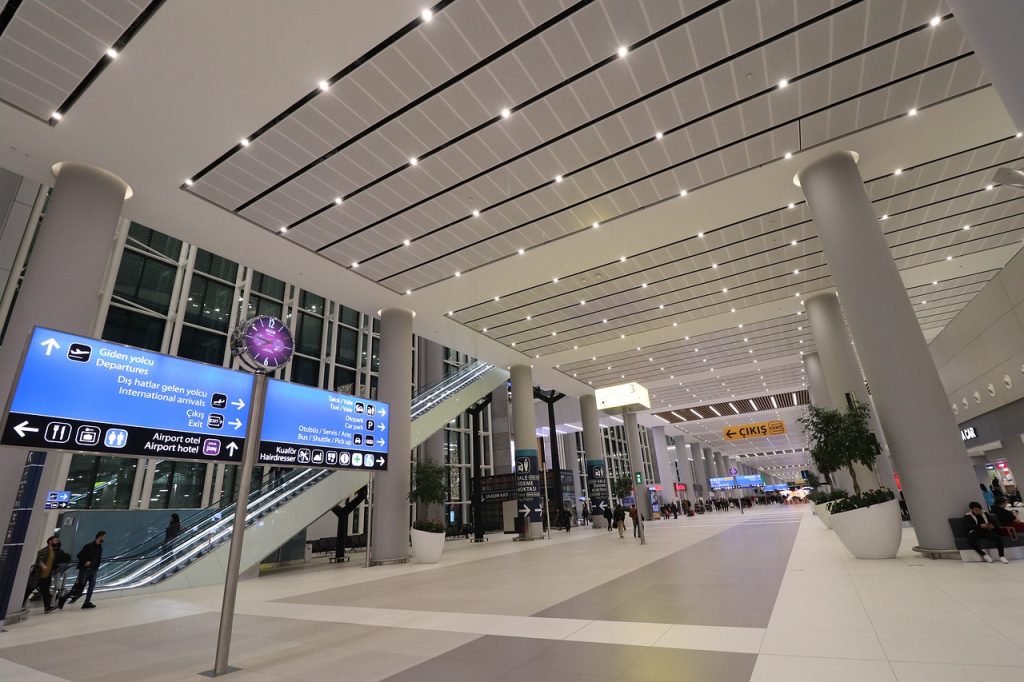Connectivity is no longer just a luxury, much like airports are no longer just airports! Home to retail malls, restaurants, hotels, and car rentals, airports host a huge number of passengers, vehicles, and IoT devices. Technological advancements have led to a growing need to improve network infrastructure, with many operators turning to private cellular to support this.
In this article, we discuss how Private 5G Networks are being implemented to enhance communication, IoT connectivity, and passenger experience while improving security and safety for all stakeholders.
Airport Technology Trends
As with the majority of large businesses, airports are also modernising to keep up with the high demand of passengers and airfreight. Smart airports are being built across the world with those already in existence revamping and constructing more terminals. These new and improved airport terminals are focusing on internet of things devices (safety sensors, lighting, high standard cameras) and security to improve efficiency throughout operations.
Low-cost airlines with quick turnarounds, such as EasyJet and Ryanair, are increasing in popularity – to deal with this increased capacity, such airlines now have their own dedicated terminals. These terminals rely on a good connection for communication between ground-service providers and flight crew, to support the efficient management of all operations before take-off and on landing.
Other technology trends within the aviation industry include:
- Leveraging connectivity and data to improve operational efficiency
- New “hub” airports
- Using technology at all touchpoints to improve customer satisfaction
- Managing on-site warehousing and logistic centres for freight companies
Airport as hubs
Many airports are host to hundreds of companies, with thousands of employees. Businesses including hotels, car rentals, large retail facilities, and airfreight must be able to coordinate with the central airport authority for matters surrounding security, traffic, signage, and vehicle movement. This makes the business continuity of each entity reliant on a fast, reliable connection for communication. Site-owners are responsible for connecting stakeholders such as transportation companies, services providers, operations, and public safety officers. Fortunately, the campus approach of Mobile Private Networks can accommodate the scale of hub airports, with 5G having the capacity to support thousands of devices. With features such as smart network slicing, secure, localised data management, end-to-end encryption, and unrivaled speeds, Private 5G Networks offer the perfect solution to manage airport-wide connectivity.
Airport Industry transformation, automation, and IoT-led innovation
Technological innovation within airports is known as “Airport 4.0”. Automation is at the heart of this, with many operators moving away from traditional paper processes. Airports can increase efficiency, reduce costs, and increase revenue by digitising airport operations, passenger processing, and baggage management:
Airport operations are evidently more efficient by leveraging automation and IoT. Internally, this ranges from digital signage used to keep employees and passengers up to date, to smart building technology which enables ventilation, heating, lighting, and safety sensors to be controlled remotely. Externally, high-speed 5G networks provide connectivity, allowing airports to monitor runways, airfreight, and make real-time decisions.
Passenger processing is now adopting a paperless approach including QR codes, biometrics, automated passports scanners, and video analytics, developing a walk-through experience for passengers, while reducing queues and waiting times.
Baggage management has always been problematic for airports. In 2007 over 50 million passenger bags were recorded as mishandled due to errors made by employees. After the implementation of baggage tracking, this number dropped considerably to 25.4 million per year. However, with new technologies such as smart cameras on baggage ramps, airports can monitor luggage to further reduce this number.
Improving Airport Safety and Security
Airports have always had concerns surrounding security and must be at the forefront of technology to ensure the safety of all passengers and employees. Incidents such as 9/11 in 2001 have resulted in the tight security processes we know today, and a resilient network is central to this. Private 5G Networks provide the most secure, robust wireless connection possible, enabling the required infrastructure for security cameras, passport scanners, and wearable tech such as augmented glasses. Features include prioritising mission-critical processes through network slicing, localised data management with 3GPP carrier-grade encryption, and 24/7 remote management.
To find out more please fill out our enquiry form and a member of our team will be in touch.
